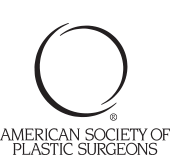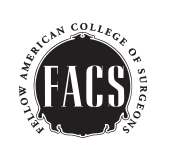Some women turn to plastic surgery for opposite reasons yet still in search of the same goal–a shapely, proportionate bust. Many women rely on cosmetic enhancement to enlarge their breasts, but for women whose bustlines are naturally oversized, the weight of excessively large breasts can lead to several problems. If you can identify with this, you likely experience one or more of the following:
- Back and neck pain
- Skin irritation/bra strap indentation
- Skeletal deformities
- Breathing problems
Additionally, abnormally large breasts can lead to embarrassment and emotional distress. Self-conscious women and girls may refrain from exercise, and consequently, unhealthy weight gain may result.
Fortunately, there is a surgical solution. Breast reduction (reduction mammaplasty) can remove the unwanted excess fat, glandular tissue, and hanging skin that causes undue discomfort. Dr. Taylor has helped countless patients attain smaller, lighter, and firmer breast volume with breast reduction surgery. Other benefits of this procedure include:
- Reduced areola (dark skin surrounding the nipple)
- Rounder, more attractive breast shape (for those whose previous breast shape was pendulous)
- Improved proportion to the rest of the body

Why Choose Dr. Taylor for My Breast Reduction in Pasadena?
Dr. Thomas Taylor is a well-respected, board-certified plastic surgeon specializing in cosmetic breast surgeries, including breast reductions in Pasadena, California. As a leader in his field with a compassionate bedside manner, you can count on our surgeon for the highest level of care.
To schedule a consultation with Dr. Taylor, call (626) 988-4287.
Am I a Candidate for Breast Reduction in Pasadena, CA?
Determining if you are a candidate for breast reduction surgery involves evaluating several factors related to your health, breast size, and overall expectations. You may be considered a good candidate for breast reduction when you meet the following criteria:
You experience physical discomfort due to large breasts, such as back, neck, or shoulder pain, indentations from bra straps, or irritation beneath the breast crease. You are in good overall health, without conditions that may impair healing or increase complications, such as uncontrolled diabetes or severe cardiovascular issues.
Your breasts are too large for your body frame, causing physical or emotional distress and limiting your physical activities or causing difficulty in finding clothing that fits properly. You feel self-conscious or unhappy about the size of your breasts, affecting your self-esteem or mental well-being.
While breast reduction can be appropriate at various ages, it’s generally recommended that candidates have fully developed breasts. Teenagers should discuss the timing and potential impact on future breast development with their surgeon.
Candidates must be nonsmokers or willing to quit for a specified period before and after the surgery, as smoking increases the risk of complications during surgery and interferes with the healing process. You should also have clear and realistic expectations of what breast reduction surgery can achieve and be prepared for the changes in breast appearance and potential scarring.
How Should I Prepare for My Breast Reduction?
Preparing for your breast reduction involves several steps to ensure a succesful surgery and an optimal recovery. Here’s a comprehensive guide to help you prepare:
Consultation
Schedule a consultation with Dr. Taylor in Pasadena, California, to discuss your breast reduction goals, medical history, and specific concerns. He will explain the procedure and evaluate your suitability. If Dr. Taylor feels you are a good candidate, he will develop a personalized surgical plan.
Medical Testing
To confirm your candidacy, you may also need a more complete assessment, including blood tests and possibly a mammogram, to ensure you are in good health for surgery.
Discontinue Certain Medicines and Habits
You may need to stop taking medications, such as anti-inflammatories, blood thinners, and herbal supplements, that can increase bleeding risk. If you smoke, you’ll need to quit several weeks before and continue not smoking after surgery to promote healing. Commit to a healthy diet and exercise routine to optimize your physical condition.
Arrange Support and a Comfortable Resting Spot
Plan to have someone drive you home following your procedure and stay with you for at least the first 24-48 hours to assist with daily activities and monitor your recovery. Create a comfortable recovery area at home with essentials such as extra pillows, easy-to-reach items, comfortable clothing, and any prescribed medications. Stock up on beverages and precooked, healthy meals to ensure you stay nourished and hydrated.
Take Steps to Ensure Your Emotional Readiness
Prepare yourself mentally for the surgery and recovery while understanding that initial swelling and discomfort are a normal part of the healing process. Having a positive mindset and patience will aid in your recovery.
Follow Pre-Surgical Instructions
Dr. Taylor will provide specific pre-operative instructions, such as fasting before surgery, avoiding certain foods or drinks, and bathing instructions to minimize infection risk.
Following these steps and adhering to your surgeon’s guidance can help ensure a successful breast reduction surgery and a smoother recovery.
The Breast Reduction Procedure
Dr. Taylor performs breast reduction surgery in the following manner:
- An anchor-shaped incision is created by circling the areola, extending downward, and following the natural curve of the breast fold.
- Excess glandular tissue, fat, and skin are removed, and the nipple and areola are raised to a higher, more appealing position.
- Breast skin is redraped from both sides of the breast down and around the areola, shaping the new contour of the breast.
If scars are a concern, inquire about techniques that can sometimes be used to minimize scarring.
What Procedures Can Be Combined With Breast Reduction?
Dr. Taylore always combines a breast lift with breast reduction to ensure the reduced breasts are also contoured and tightened. Some women choose to add breast reduction as a part of a complete Mommy Makeover, a combination of procedures that includes liposuction or tummy tuck techniques.
When Can I Have Breast Reduction Surgery?
Typically, breast reduction isn’t performed until the breasts are fully developed. However, there are exceptions; for example, some teen girls may undergo the procedure if a physician determines they are experiencing physical or emotional discomfort that is severe enough to warrant it.
Ideally, the best candidates are mature enough to comprehend the procedure fully and have realistic expectations regarding the likely results. Women who intend to breastfeed should discuss this desire with Dr. Taylor during their consultation.

A Pasadena Breast Lift Expert | Dr. Thomas Taylor
Dr. Taylor is a board-certified plastic surgeon and cosmetic breast surgery specialist committed to delivering excellent results and compassionate care. To reach Taylor Plastic Surgery Center, call (626) 988-4287 and schedule your Pasadena, California breast reduction consultation.
Breast Reduction FAQ
-
Should I lose weight before a breast reduction?
The best breast reduction outcomes are achieved when patients are at a healthy weight before the surgery. If you are overweight, Dr. Taylor may recommend that you achieve or be close to your ideal weight and maintain it for a few months before scheduling the procedure. Significant weight loss loosens breast skin and impacts the strength of the underlying tissues, resulting in sagging and droopy breasts that will require a breast lift to correct.
Choosing an ideal breast size that matches your body is much easier when you are at your desired weight.
-
Which method of breast reduction is best?
There are various breast reduction techniques suited to different types of patients and desired outcomes. The method used for each patient is determined by the amount of glandular tissue, fat, and excess skin that needs to be removed. In nearly all cases, Dr. Taylor performs breast reduction using the anchor technique, as it allows for a substantial reduction while maintaining the best post-operative breast shape.
-
What is recovery after breast reduction like?
Recovery timelines will differ based on the individual. Generally, most individuals can return to normal/light activities in two to three weeks. You can expect to experience some mild swelling and tightness in the chest area, but will feel better as you recover.
Vigorous activity and heavy lifting are restricted for about six weeks. Complete recovery usually takes around eight to 12 weeks.
-
Will breast reduction affect pregnancy and breastfeeding?
Many women are concerned that reducing their breasts may negatively affect their chances of breastfeeding. While this is certainly possible, new techniques may allow our surgeon to minimize scarring, depending on the extent of reduction needed and other factors. Always discuss your future breastfeeding plans with your surgical team before the surgery.
-
Will there be significant scarring after my breast reduction surgery?
Since all breast reduction techniques require some sort of incision, scarring is inevitable. The visibility of the scars will largely depend on the surgical technique used to accomplish the procedure. Dr. Taylor will choose the method that delivers the most desired results with the least potential for residual scarring.
-
Are the results from my breast reduction permanent?
The results of breast reduction surgery are expected to remain fairly constant unless you gain or lose a significant amount of weight. It is important to note that the size and shape of the breasts may change slightly over time due to the effects of aging.



